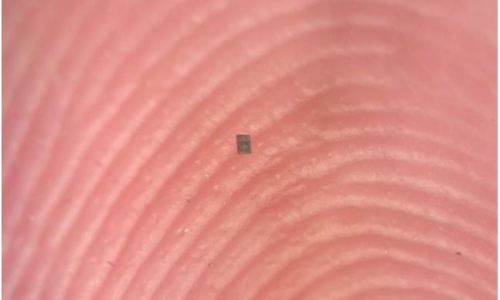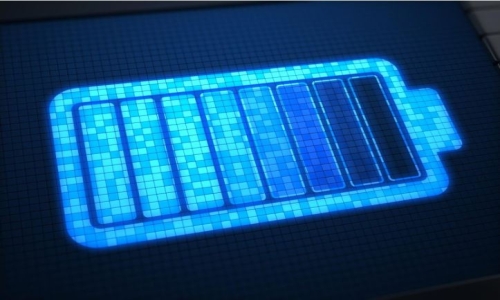


 12:3:16
12:3:16  2024-11-09
2024-11-09  739
739

If you've ever seen yourself through a thermal imaging camera, you'll know that your body produces lots of heat. This is in fact a waste product of our metabolism. Every square foot of the human body gives off heat equivalent to about 19 matches per hour.
Unfortunately, much of this heat simply escapes into the atmosphere. Wouldn't it be great if we could harness it to produce energy? My research has shown this would indeed be possible. My colleagues and I are discovering ways of capturing and storing body heat for energy generation, using eco-friendly materials.
The goal is to create a device that can both generate and store energy, acting like a built-in power bank for wearable tech. This could allow devices such as smart watches, fitness trackers, or GPS trackers to run much longer, or even indefinitely, by harnessing our body heat.
It isn't just our bodies that produce waste heat. In our technologically advanced world, substantial waste heat is generated daily, from the engines of our vehicles to the machines that manufacture goods.
Typically, this heat is also released into the atmosphere, representing a significant missed opportunity for energy recovery. The emerging concept of "waste heat recovery" seeks to address this inefficiency. By harnessing this otherwise wasted energy, industries can improve their operational efficiency and contribute to a more sustainable environment.
The thermoelectric effect is a phenomenon that can help turn heat into electricity. This works by having a temperature difference produce an electric potential, as electrons flow from the hot side to the cool side, generating usable electrical energy.
Conventional thermoelectric materials, however, are often made from cadmium, lead, or mercury. These come with environmental and health risks that limit their practical applications.
The power of wood
But we've discovered you can also create thermoelectric materials from wood – offering a safer, sustainable alternative.
Wood has been integral to human civilisations for centuries, serving as a source of building materials and fuel. We are uncovering the potential of wood-derived materials to convert waste heat, often lost in industrial processes, into valuable electricity.
This approach not only enhances energy efficiency, but also redefines how we view everyday materials as essential components of sustainable energy solutions.
Our team at the University of Limerick, in collaboration with the University of Valencia, has developed a sustainable method to convert waste heat into electricity using Irish wood products, particularly lignin, which is a byproduct of the paper industry.
Our study shows that lignin-based membranes, when soaked in a salt solution, can efficiently convert low-temperature waste heat (below 200°C) into electricity. The temperature difference across the lignin membrane causes ions (charged atoms) in the salt solution to move.
Positive ions drift toward the cooler side, while negative ions move toward the warmer side. This separation of charges creates an electric potential difference across the membrane, which can be harnessed as electrical energy.
Since around 66 percent of industrial waste heat falls within this temperature range, this innovation presents a significant opportunity for eco-friendly energy solutions.
This new technology has the potential to make a big difference in many areas. Industries such as manufacturing, which produce large amounts of leftover heat, could see major benefits by turning that waste heat into electricity. This would help them save energy and lessen their impact on the environment.
This technology could find use in various settings, from providing power in remote areas to powering sensors and devices in everyday applications. Its eco-friendly nature also makes it a promising solution for sustainable energy generation in buildings and infrastructure.
The trouble with storage
Capturing energy from waste heat is just the first step; storing it effectively is equally critical. Supercapacitors are energy storage devices that rapidly charge and discharge electricity. This makes them essential for applications requiring quick power delivery.
However, their reliance on fossil fuel-derived carbon materials raises sustainability concerns, highlighting the need for renewable alternatives in their production.
Our research group has discovered that lignin-based porous carbon can serve as an electrode in supercapacitors for energy storage generated from harvesting waste heat using a lignin membrane.
This process allows the lignin membrane to capture and convert waste heat into electrical energy, while the porous carbon structure facilitates the rapid movement and storage of ions. By providing a green alternative that avoids harmful chemicals and reliance on fossil fuels, this approach offers a sustainable solution for energy storage from waste heat.
This innovation in energy storage technology could power everything from consumer electronics, wearable technology to electric vehicles.
Reality Of Islam |
|

A tiny robo

By applying

Stanford, C

A new study
 9:3:43
9:3:43
 2018-11-05
2018-11-05
10 benefits of Marriage in Islam
 7:5:22
7:5:22
 2019-04-08
2019-04-08
benefits of reciting surat yunus, hud &
 9:45:7
9:45:7
 2018-12-24
2018-12-24
advantages & disadvantages of divorce
 11:35:12
11:35:12
 2018-06-10
2018-06-10
 6:0:51
6:0:51
 2018-10-16
2018-10-16
 8:25:12
8:25:12
 2022-03-09
2022-03-09
a hero waters thirsty wild animals
 9:4:9
9:4:9
 2022-01-06
2022-01-06
 8:39:51
8:39:51
 2022-09-23
2022-09-23
 8:30:23
8:30:23
 2022-03-03
2022-03-03
 3:18:29
3:18:29
 2022-12-24
2022-12-24
 1:34:8
1:34:8
 2022-02-01
2022-02-01
allah will not answer all your prayers
 6:56:28
6:56:28
 2022-01-01
2022-01-01
 5:41:46
5:41:46
 2023-03-18
2023-03-18
| LATEST |